The tiger shark, one of the ocean’s most feared predators, has been revealed as a relaxed and sometimes lazy hunter by scientists studying their behaviour.
In the Ningaloo Reef off the coast of Western Australia, researchers from Murdoch University’s Harry Butler Institute and the Australian Institute of Marine Science (AIMS) tagged 27 tiger sharks with specialist tags which combined cameras with motion and environmental sensors.
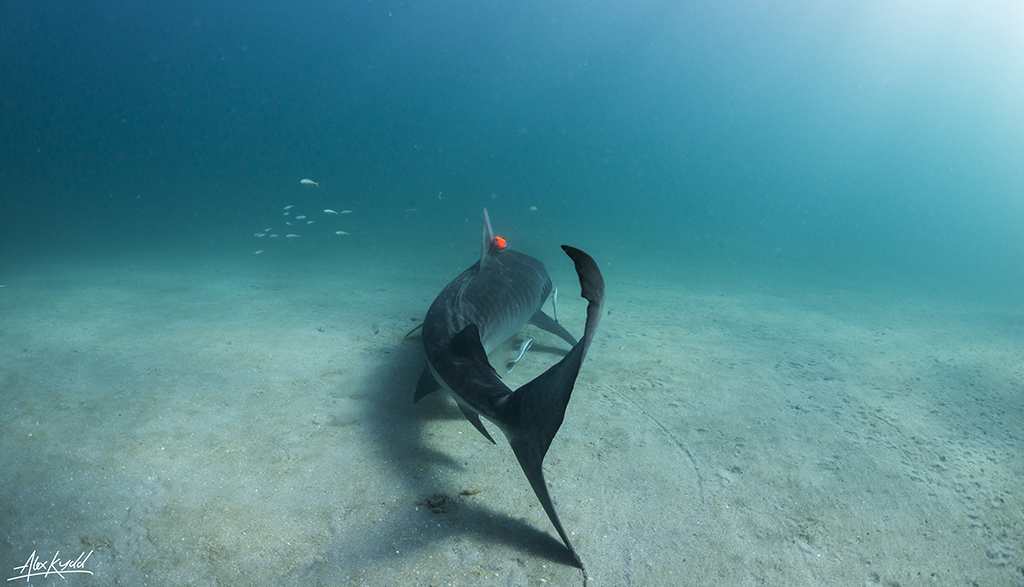
Collecting 60 hours of footage, the tags revealed the 3D movements of the sharks in relation to their prey, showing a number of target species including turtles, large fish and other sharks performing escape manoeuvres when a tiger shark showed interest.
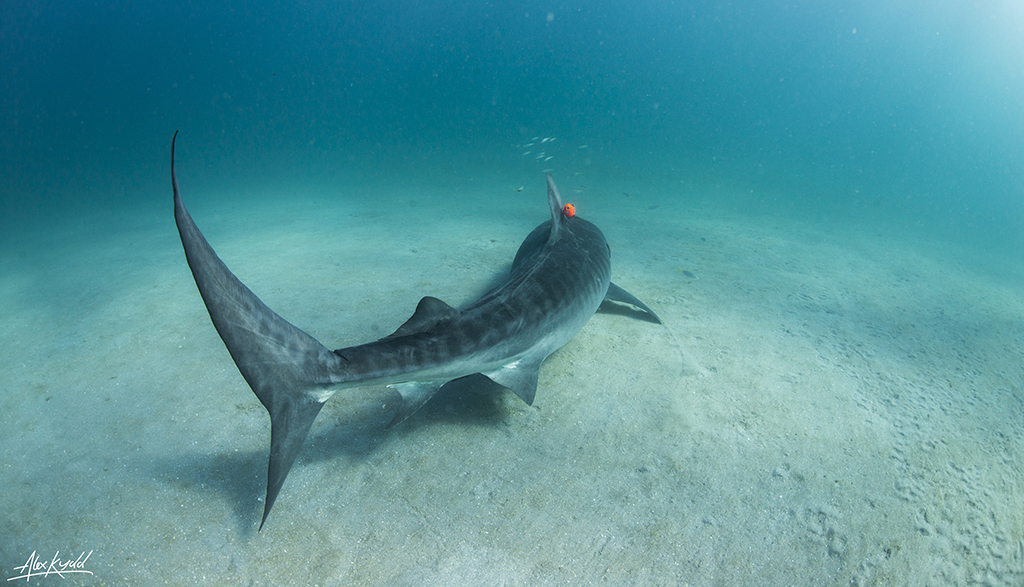
Lead author Dr Samantha Andrzejaczek observed that the tiger sharks were surprisingly lazy.
“Our tagged sharks just continued on their courses without attempting to predate on the alert individual even if they were right in front of them.
“We found the sharks were more likely to use stealth to sneak up on their prey.”
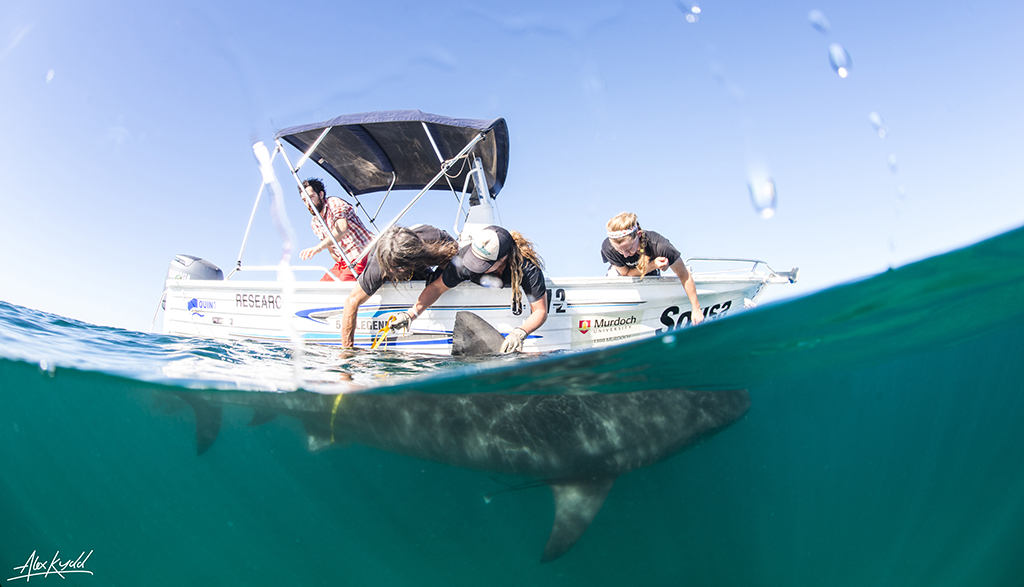
Co-author Dr Adrian Gleiss of Murdoch University’s Harry Butler Institute compared tiger sharks to lions.
“They don’t waste energy stalking prey that are already aware of them and can easily escape,” Dr Gleiss said. “These sharks minimise energy output and chances of success by sneaking up on unsuspecting turtles and large fish.”
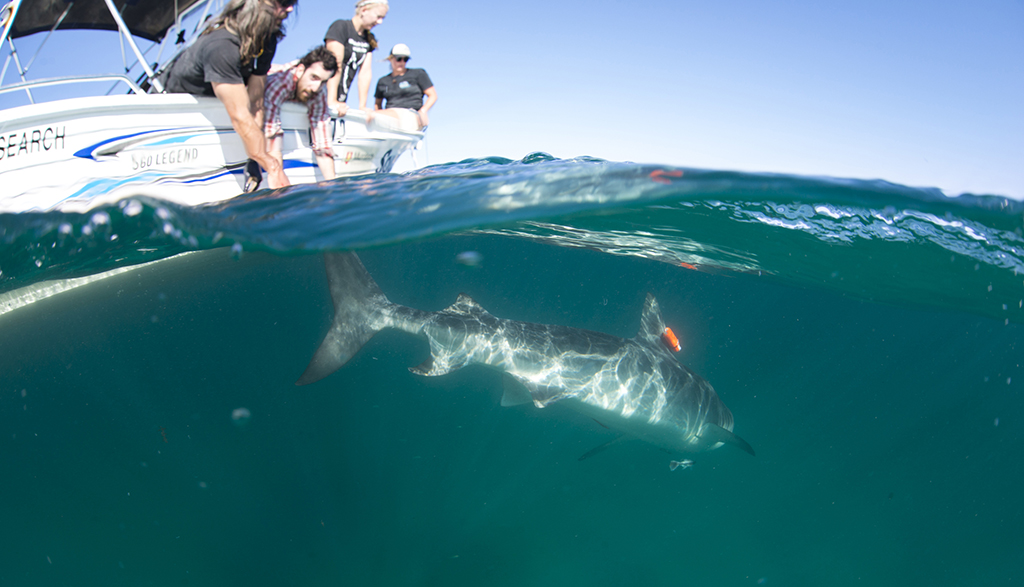
Leading shark expert Dr Mark Meekan of AIMS, another co-author of the work, said the attached cameras gave the scientists an unprecedented view of the role of tiger sharks in coral reef environments.
“We can begin to understand not just what the animals are eating, but how they alter the behaviours of the prey around them and how this may impact the coral reef,” Dr Meekan said.
“As we come up with strategies to manage and conserve these systems into the future, we need to understand how they are controlled from the top down, meaning we need to understand how these top predators are using these reefs.”
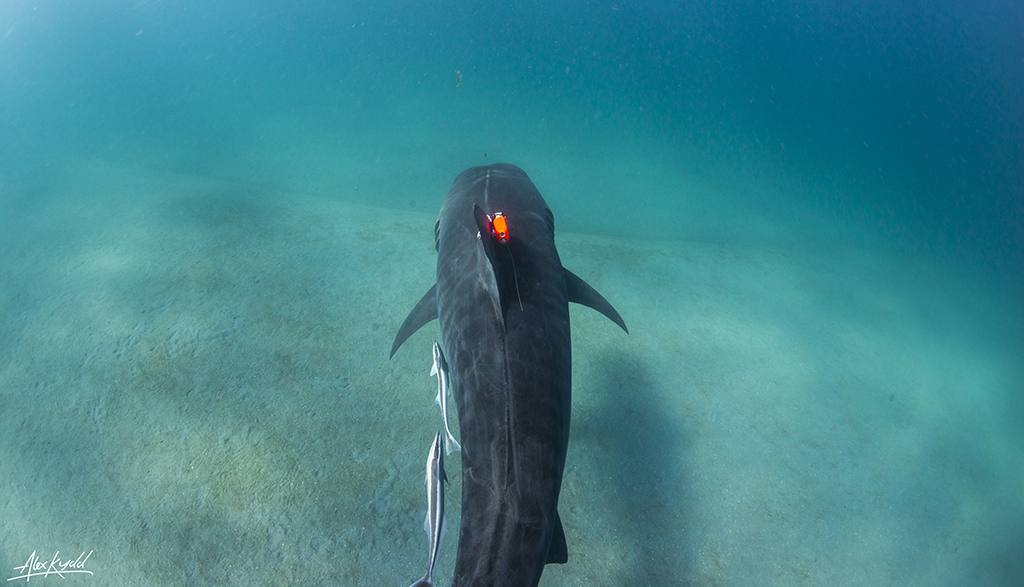
The tags revealed the tiger sharks frequently hunted in the shallow sandflat habitats of Ningaloo Reef.
Clamped to the dorsal fins of the sharks by hand, the tags automatically detached after 24 to 48 hours. The floating tags were tracked down using a radio antenna, and the data downloaded, providing the researchers with a day or more in the life of the shark.
The project was conducted by scientists from the Australian Institute of Marine Science, Murdoch University, the University of Western Australia and Stanford University in California.


